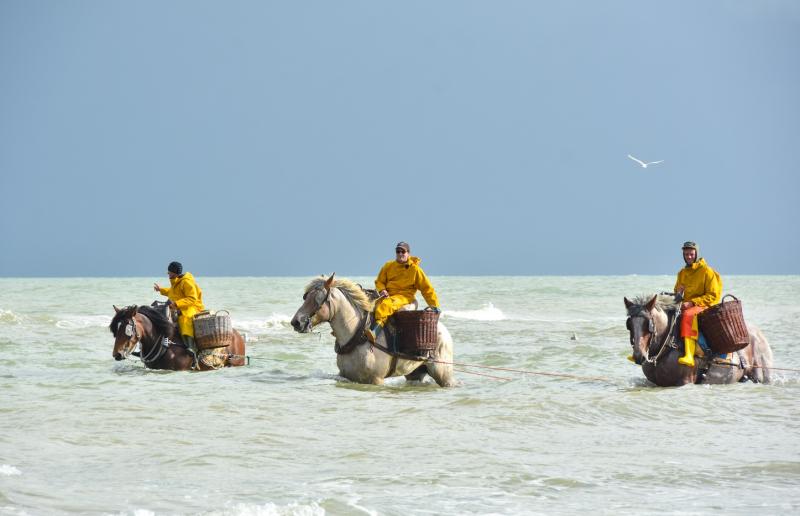
Horseback shrimp fishing
Horseback shrimp fishing is a traditional method of fishing practiced in the coastal regions of Belgium, specifically in Oostduinkerke, a village in the Flemish province of West Flanders. This unique form of fishing dates back several centuries and involves the use of draft horses to help fishermen catch shrimp in shallow waters. The primary species caught using this method is the common brown shrimp (Crangon crangon), which thrives in the North Sea along the Belgian coast.
The fishermen, known as "shrimpers," ride large Belgian draft horses into the shallow waters during low tide, typically between knee and waist-deep. These horses are chosen for their strength, calm nature, and ability to walk steadily through the water, towing large nets. Attached to the sides of the horses, the nets drag along the sea floor, capturing shrimp and other small marine creatures. Wooden boards are used to keep the nets open, while chains stir up the sand and help push the shrimp into the nets. Once filled, the nets are periodically emptied into baskets that are strapped to the horses' backs.
This fishing tradition is highly dependent on the tides, weather conditions, and the availability of shrimp. The shrimp are typically boiled immediately after being caught, preserving their freshness and flavor. This method of shrimp fishing has been passed down through generations of families in Oostduinkerke and remains an important cultural heritage in the region.
In 2013, UNESCO recognized horseback shrimp fishing in Oostduinkerke as Intangible Cultural Heritage of Humanity, highlighting the significance of this practice not only as a sustainable fishing method but also as an enduring tradition. Today, only a small number of active horseback shrimp fishermen remain, and their activities are largely maintained for cultural preservation and tourism, although shrimp caught in this traditional manner are still sold in local markets.
The village of Oostduinkerke hosts annual shrimp festivals where visitors can witness horseback shrimp fishing demonstrations, learn about the history of the practice, and taste freshly caught shrimp. These events are part of broader efforts to keep the tradition alive for future generations.
Stichworte







